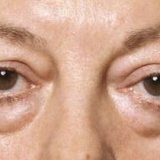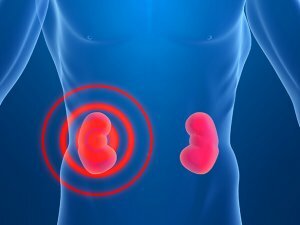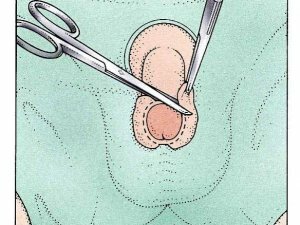Edema under the eyes and kidney disease

The task of the kidneys is to extract from the body the waste materials of protein metabolism, including nitrogenous slags. Together with products of protein metabolism, salts, water and some other substances are released.
Cardinal symptom of kidney disease is a tendency to edema. Edema is sometimes the first sign of a disease.
Symptoms of the disease - edema
Kidney patients complain of general malaise and a feeling of weakness, headaches, nausea and other symptoms. Patients suffering from kidney disease often have swelling, in particular under the eyes;Fluid is retained by the tissues, causing swelling.
Edematous tissues are characterized by looseness and softness. Edematous fluid is easily displaced, there is a significant tendency to accumulate this fluid in loose tissues, in particular under the eyes.
Edema associated with kidney disease is often extremely watery. Flushing fluid is relatively easy to move from place to place. Renal swelling is mild and mobile.
Edema under the eyes and kidney disease are interrelated. Edema in these diseases develop very quickly and spread throughout the body and often appear on the face, especially under the eyes.
Unsatisfactory allocation of water is that water is retained in the body and provokes the appearance of edema.
Swelling occurs as a result of a disruption in the structure of the capillary walls, which begin to flow from the blood into the tissues more than the amount of liquid with a high protein content. Capillary edema is located in places most rich in blood vessels, for example, on the face under the eyes.
Swelling under the eyes is observed in patients suffering from lipid nephrosis, chronic diffuse nephritis, renal eclampsia and others.
With the incidence of edema and vasospasm, development of renal eclampsia in acute nephritis is associated with sudden seizures.
Chloremic edema
When a large amount of salt is added to a renal patient, edema often becomes worse, with the elimination of table salt from the food - markedly reduced. In some renal diseases, the excess chlorine content in tissues and blood has been proven. Sodium chloride, deposited in tissues, helps to retain liquid in them. However, regarding the value of the salt factor in the origin of edema under the eyes, there are objections. The effect of swelling of salt is manifested only in the presence of hypoproteinemia or other factors that cause swelling.
Elimination of edema
Against edema in kidney diseases apply calcium chloride( 10% solution of 10ml per vein).With edemas, the introduction of glucose into the vein in 20-40% hypertensive solution of 20-40 mg also works well;These infusions are also useful when there are signs of uremia. Adonis works perfectly as a diuretic and is used for edemas caused by kidney diseases.
In the treatment of kidney diseases, physiotherapy methods are often used.
Kidney Diseases
As a result of kidney diseases, there are a variety of disorders of urinary function, manifested in changes in quantitative and component urine indicators. In patients suffering from kidney diseases, the necessary substances are withdrawn, and harmful substances remain, resulting in infectious processes of the urinary tract, urolithiasis, pyelonephritis, kidney failure and other kidney diseases.
Today, many people are prone to kidney disease. Thanks to the physiological characteristics of men are sick less often than the female half of humanity.
One of the symptoms of kidney disease is edema in the eye area, especially - edema under the eyes more often pronounced in the morning.
Renal edema is accompanied by a number of other symptoms characteristic of kidney disease.
If certain signs of kidney disease occur to you, you should immediately consult a urologist for advice, diagnosing the disease and prescribing treatment.



